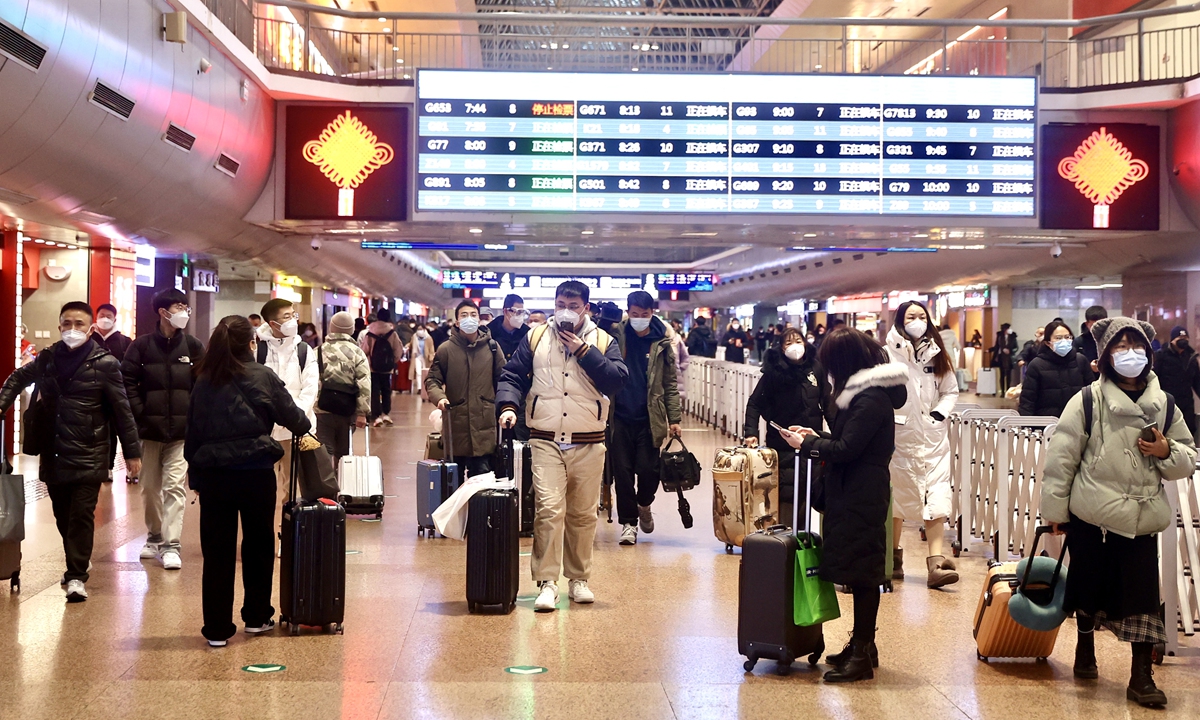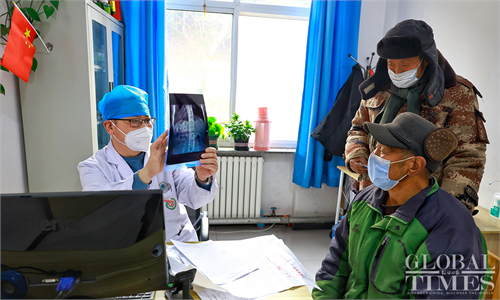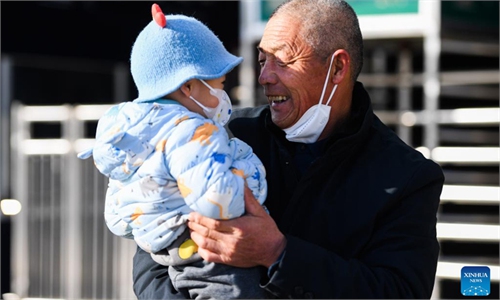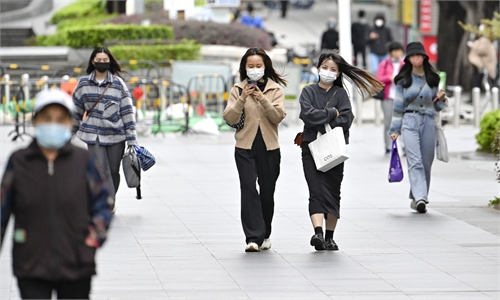
People wait for trains at the Beijing West Railway Station during the peak travel rush for the upcoming Chinese New Year holidays on January 16, 2023. China's 40-day Chunyun or Spring Festival travel rush, the world's largest human migration, is expected to see about 2.09 billion passenger trips from January 7 until February 15. Photo: VCG
Chinese health authorities reiterated the importance of anti-epidemic work in rural areas at a press conference on Thursday as the country is preparing to celebrate the 2023 Chinese New Year, amid concerns about outbreaks in these places with large numbers of people returning from cities.
China is facing the first Spring Festival - the most important traditional festival for Chinese people - after the country downgraded its epidemic management measures.
From national officials to pharmaceutical manufacturers and ordinary residents, the country is doing its best to protect vulnerable people and prevent large-scale infections and deaths in rural areas.
Rural areas are the top priority of the anti-epidemic work, Mi Feng, a spokesperson for the National Health Commission (NHC), said at a press conference on Thursday, calling for a good arrangement of medical resources and services for key groups like the elderly and children in these areas during the holiday.
China's 40-day Spring Festival travel rush, the world's largest human migration, is expected to see about 2.09 billion passenger trips this year, up 99.5 percent from 2022 level. The recovery reflects Chinese people's happiness at returning to normalcy after three years of the epidemic, but it has also brought about huge concerns about COVID-19 waves spreading to rural areas.
In recent weeks, most people in major cities may have been infected, so it's unlikely that more large-scale outbreaks will occur in those places. However, we should focus more on remote rural areas, Wang Guangfa, a respiratory expert from Peking University First Hospital, told the Global Times on Thursday.
For major cities, the pressure of infection peaks has eased in recent days but individuals need to remain vigilant given that the Spring Festival travel rush may accelerate the transmission of COVID-19, Wang said.
Chatting with villagers in Mianyang, Southwest China's Sichuan Province, via video link on Wednesday, Chinese President Xi Jinping said he was primarily concerned about rural areas and rural residents after the country adjusted its COVID-19 response measures.
Xi stressed efforts to improve medical care for those most vulnerable to the virus in rural areas, and ensure the health of rural residents and their normal work and life to the maximum extent possible.
When talking about the country's COVID-19 response on the same day, Xi noted that "tough challenges remain, but the light of hope is right in front of us."
Preparations have been made in these areas to protect local residents, officials and experts said at the Thursday press conference.
Mao Dezhi, an official from the Ministry of Agriculture and Rural Affairs, said that the ministry had conducted a nationwide survey covering 590 million people in rural areas from five key groups - the elderly, children, people with illnesses, the disabled, and pregnant women.
A mechanism has been established across the country to arrange more than 19 million officials, Party members and medical staff in rural areas to take care of local key groups, according to Mao.
More than 57 million healthcare packages had also been distributed to rural areas nationwide, mainly to the five key groups, Mao revealed.
In response to the problem of medical resource shortages in rural places, Mao said that related authorities had spared no effort in enhancing medical resource provision to these areas. For example, about 1.2 million oxygen digimeters had been equipped in nearly 600,000 village clinics across the country, and oxygenerators had been distributed in 832 hospitals in towns that had just been lifted out of poverty.
As of Thursday, nearly 2.5 million oxygen digimeters and 191,000 oxygenerators had been distributed to hospitals, clinics and medical institutes in township-level places and communities, according to Guo Yanhong, director of the NHC's health emergency response department.
Guo noted at the press conference that nearly 99 percent of the clinics at the township level had set up fever clinics, which are required to guarantee normal operation during the holiday.
Zeng Guang, chief epidemiologist of the Chinese Center for Disease Control and Prevention, urged doctors in urban areas to go to rural places as volunteers during the holiday to help these places prevent and overcome outbreaks.
He also suggested that people returning from cities to rural areas bring medicines with them and help advocate the importance of vaccination to relatives in rural areas.
A woman surnamed Chen, who was born in Central China's Hubei Province and works in Beijing, told the Global Times that she would bring some antigen testing kits when returning to Hubei.
Another woman surnamed Zhao, who is from Southwest China's Chongqing Municipality but now lives in Beijing, told the Global Times that she bought some ibuprofen for her grandmother in her hometown.
Chinese pharmaceutical companies are accelerating research and development and the production of drugs and vaccines to contribute to the current fierce fight against the COVID-19 wave after the policy adjustment.
China's leading pharmaceutical giant China National Pharmaceutical Group revealed on Wednesday that it had developed four potential Omicron-specific candidate vaccines.



